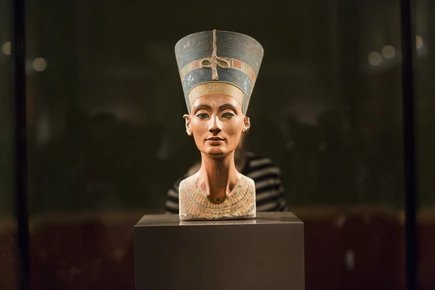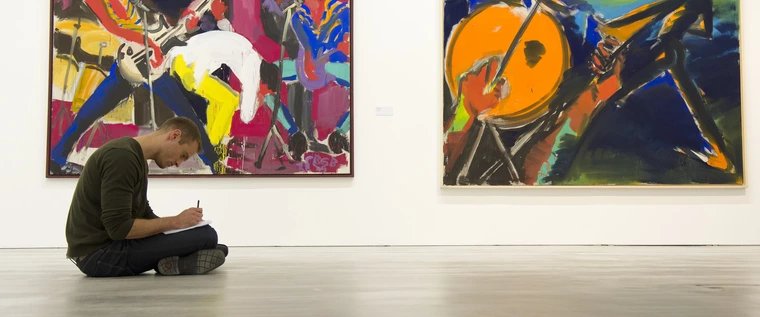
Sacrow encounters
The Sacrow cultural season begins this spring with the anniversary exhibition "War - and Peace? 100 years of Bernhard Heisig 1925-2025" and celebrates the artistic legacy of Bernhard Heisig (1925-2011), one of the most important painters in German post-war history.
Bernhard Heisig would have been 100 years old on March 31, 2025. As a co-founder of the Leipzig School, Heisig is one of the most influential artists of the 20th century. His works were created in the field of tension between war, dictatorship and social change - a topic that could not be more topical. They not only reflect his personal experiences as a former war volunteer during the Second World War, later as director of the Academy of Visual Arts Leipzig and functionary in the GDR, but also the collective traumas of German history. In particular, his intense struggle with the horrors of war and his examination of the moral responsibility of an artist in a politically charged environment make his works an indispensable contribution to the German culture of art and remembrance.
"'I would have liked to have painted friendlier pictures' is the title of one of Bernhard Heisig's later works. A title that seems like a résumé - self-confident and defiant and resigned at the same time. Bernhard Heisig, this great German painter, was a figure of the century, a contemporary witness par excellence, a moralist by experience." - Wolfgang Thierse, former President of the German Bundestag, in his eulogy for Bernhard Heisig, 2011
Leipzig School
Bernhard Heisig is regarded as one of the founders and leading representatives of the Leipzig School, a movement of modern painting from the 1970s to the 1980s, which emerged from the 1960s onwards from painters predominantly active in Leipzig and made this city a respected center of art. Across styles and generations, the Leipzig School stands for a high artistic standard, combined with a conscious social analysis, executed with remarkable craftsmanship. Together with Hans Mayer-Foreyt, Werner Tübke and Wolfgang Mattheuer, Bernhard Heisig is counted among the founders of the Leipzig School. In addition to thematizing his own, primarily war-related experiences, he dealt intensively with cultural history, literature, theater and music in his search for figures of identification - and possibly also for absolution. He brought these inner struggles openly and honestly to the screen.
Bernhard Heisig knew how to combine technical brilliance, innovative formal language and depth of content like no other. His painting style is characterized by an expressive, dynamic style of representation with high-contrast colors and a profound examination of social and political themes. His ability to fuse classical painting traditions with modern themes while capturing the spirit of the times speaks to an artist who not only reflects his own time, but can also inspire future generations. This combination of technical excellence, intellectual acuity and lasting cultural influence establish Bernhard Heisig as an exceptional artist of his time.
The Bernhard Heisig anniversary exhibition at Sacrow Castle
The anniversary exhibition at Sacrow Castle presents a carefully curated selection of around 60 paintings from rarely shown loans and family collections, as well as 100 prints, including preparatory drawings for the famous portrait of Chancellor Helmut Schmidt. In addition, works by Bernhard Heisig's family are on display on the upper floor of Sacrow Castle, providing an extended view of his artistic environment and a unique insight into the artistic dynamics of the artist's family. Photographs from the former photography class at Leipzig University and from the private archive round off the exhibition.
The aim of the exhibition is to illuminate Bernhard Heisig's work as a mirror of German history and its artistic treatment. The idea behind the exhibition is to go beyond the mere contemplation of art and enable visitors to reflect deeply on the moral responsibility of the artist and creator of art in times of war and peace. It emphasizes the importance of art as a means of dealing with the past, as an aid to decision-making for the present and future, and as a contribution to social dialogue.Translated with DeepL
Additional information
Price info: Admission 8 euros, reduced 5 euros
Free admission for pupils
Price: €8.00
Reduced price: €5.00
Reduced price info: Admission 8 euros, reduced 5 euros
Free admission for pupils
Free admission for pupils
Price: €8.00
Reduced price: €5.00
Reduced price info: Admission 8 euros, reduced 5 euros
Free admission for pupils


